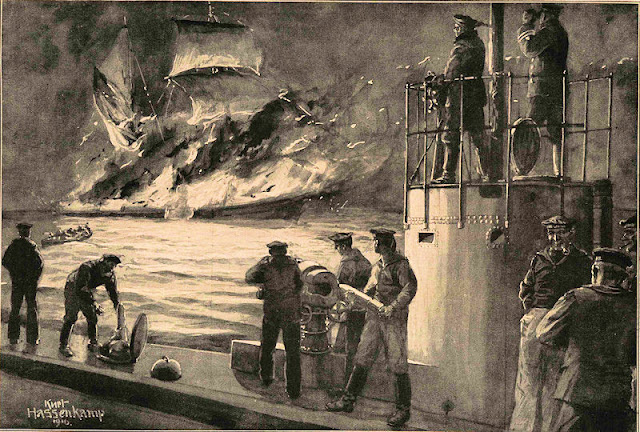Germany's U-boat "think tank" miscalculated the Allies' ability to keep up their food production despite major losses of ships and the grain they were carrying at sea. Here historian Holger Herwig of the University of Calgary gets to the nub of the error.
Most critically of all, Holtzendorff and his experts showed a glaring inability to synthesize accurately the bulk of statistical materials on British wheat, grain, and agricultural conditions. For Britain, they assumed that there was no alternative to wheat, thus overlooking other cereal grains almost entirely. Additionally, they failed to recognize that the British planted only 43 acres of wheat per 1,000 population (compared to 308 acres in Germany and 468 acres in France). Overall, the British had been so secure in the belief that the Royal Navy could at all times guarantee food imports that there were fewer acres devoted to cultivated crops in 1915 than there had been before 1913.
Obviously, cultivation could be increased greatly. Most dramatically, the Food Production Department under a Cultivation of Lands Order in 1917 gave county officials the power to force farmers to put about 1 million acres of grasslands under the plow; a similar increase was implemented in 1918; and another was planned for 1919. While this reduced meat stocks by as much as 24 percent, it enhanced net food output by 2.3 million tons. Urban "garden allotments" increased that figure by another 1 million tons. In 1918, which brought the most inclement harvest season in years, wheat production was up over peacetime levels by 1 million tons, oats by 1.4 million, and potatoes by 2.6 million. Recent investigations suggest that Britain turned almost 4 million acres of common and grasslands into grain and vegetable fields over the last two years of the war.
Another cardinal miscalculation by Admiralty Staff planners was in the area of United States grain production. By assuming 1916 wheat output of 640 million bushels to be the norm, they failed to appreciate that 1916 was an off-year due to crop failure already occasioned in part by wheat rust. Normal annual production in 1913, 1914, and 1915 had been 900 million bushels. Thus, while the 1917 wheat crop remained almost the same as that of 1916, the 1918 output again rose to normal levels (921 million bushels). The rye harvest steadily increased from 47.4 million bushels in 1916 to 62.9 million in 1917, and to 91 million in 1918. American wheat and rye exports in 1917-8 stood at almost 1 million tons over prewar levels. Moreover, the "total war" advocates in Berlin conveniently overlooked that the carryover from the 1915 wheat crop on 1 July 1916 stood at 179 million bushels, and that as late as 1 July 1917, it still measured 55.9 million.
From: Total Rhetoric, Limited War: Germany's U-Boat Campaign 1917–1918; Journal of Military and Strategic Studies; Vol 1, Number 1, 1998


What a serious intelligence failure!
ReplyDelete